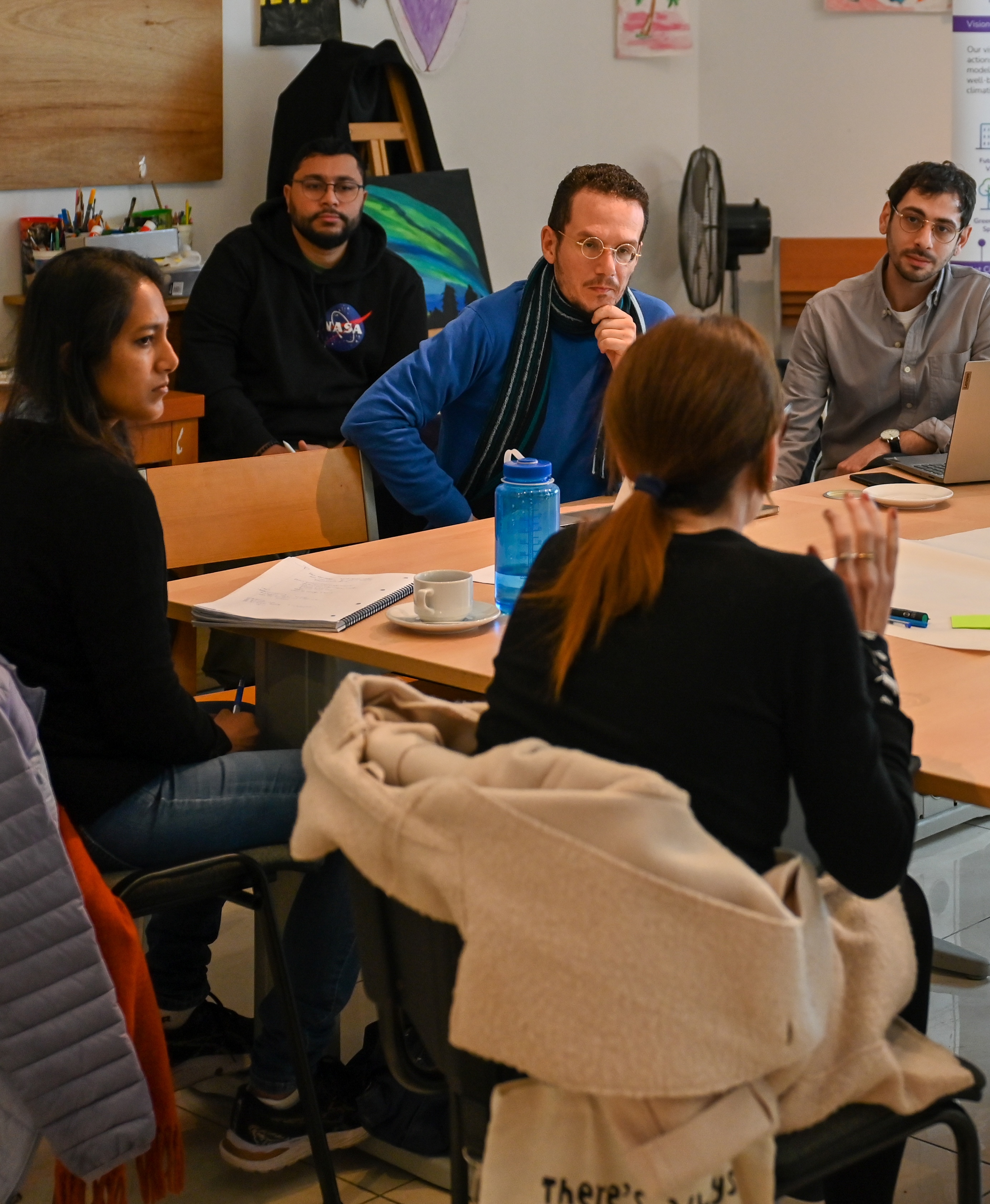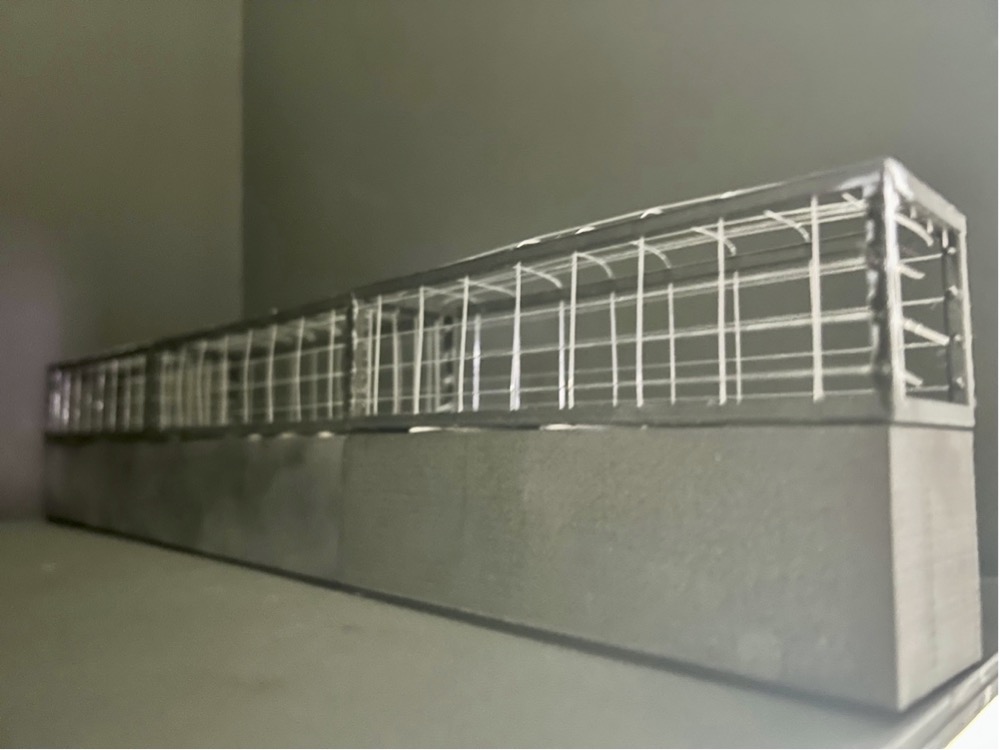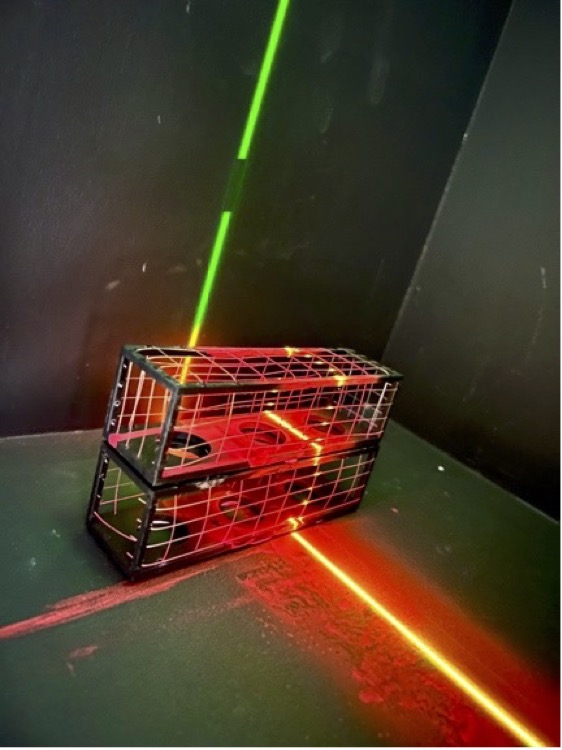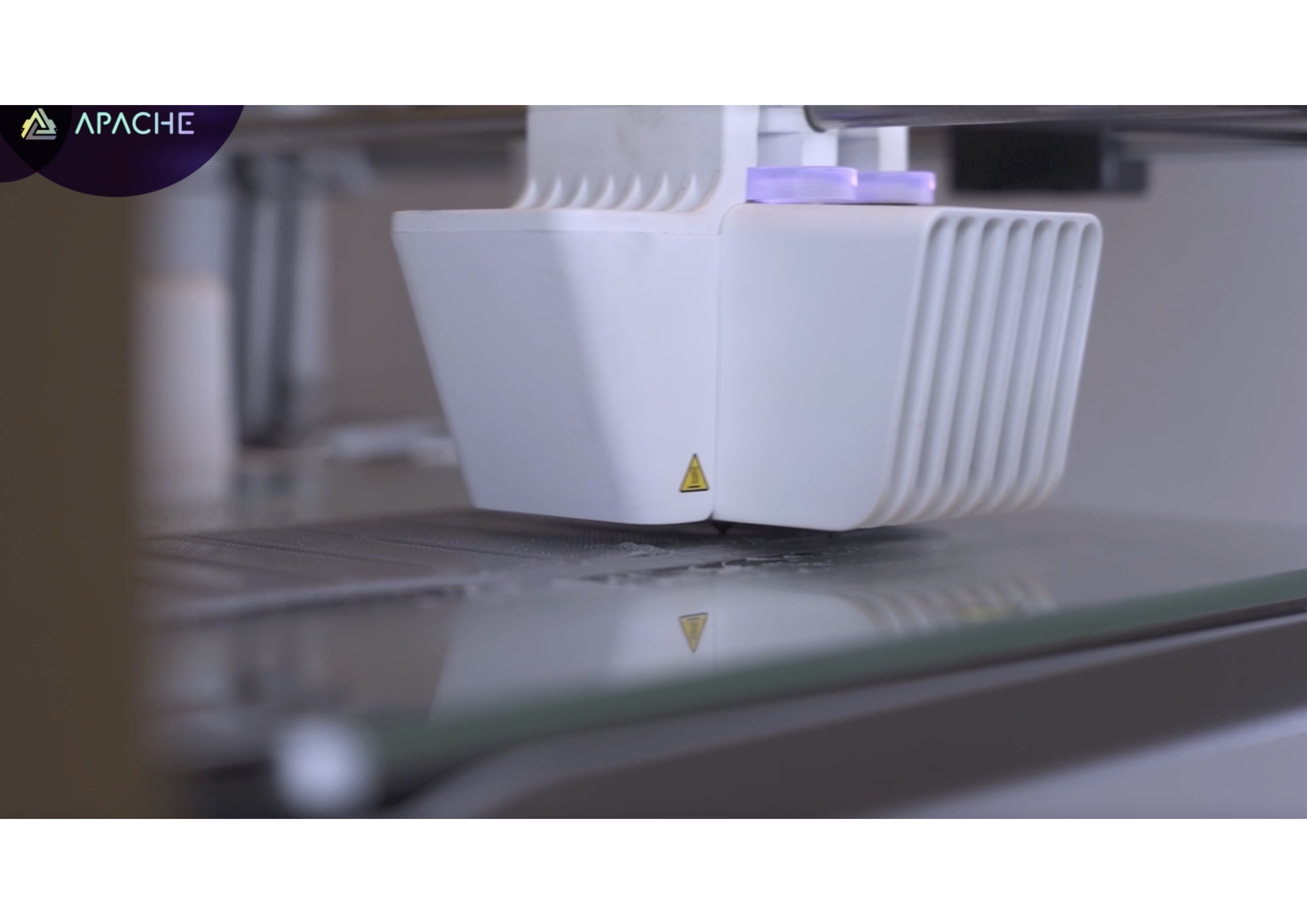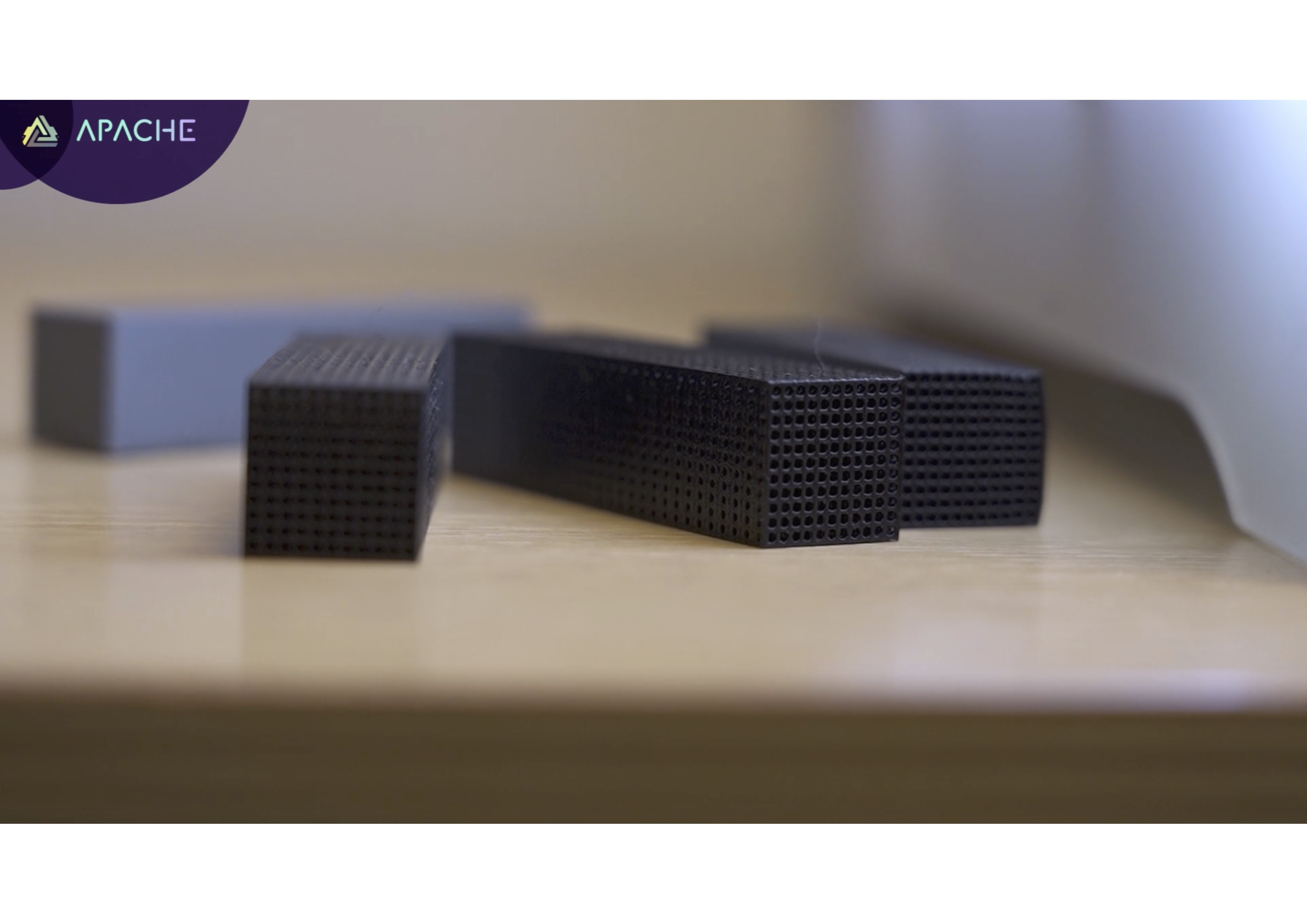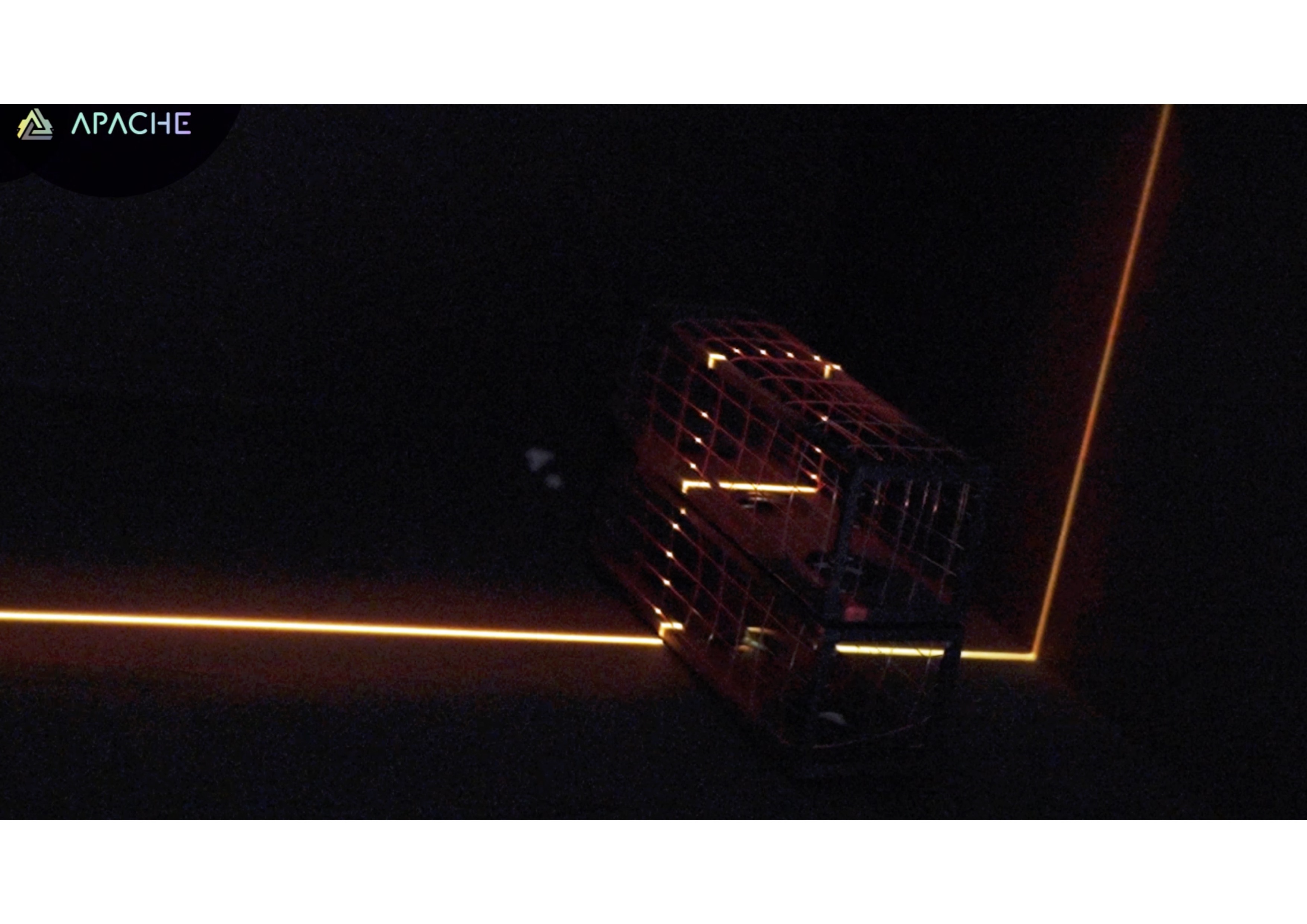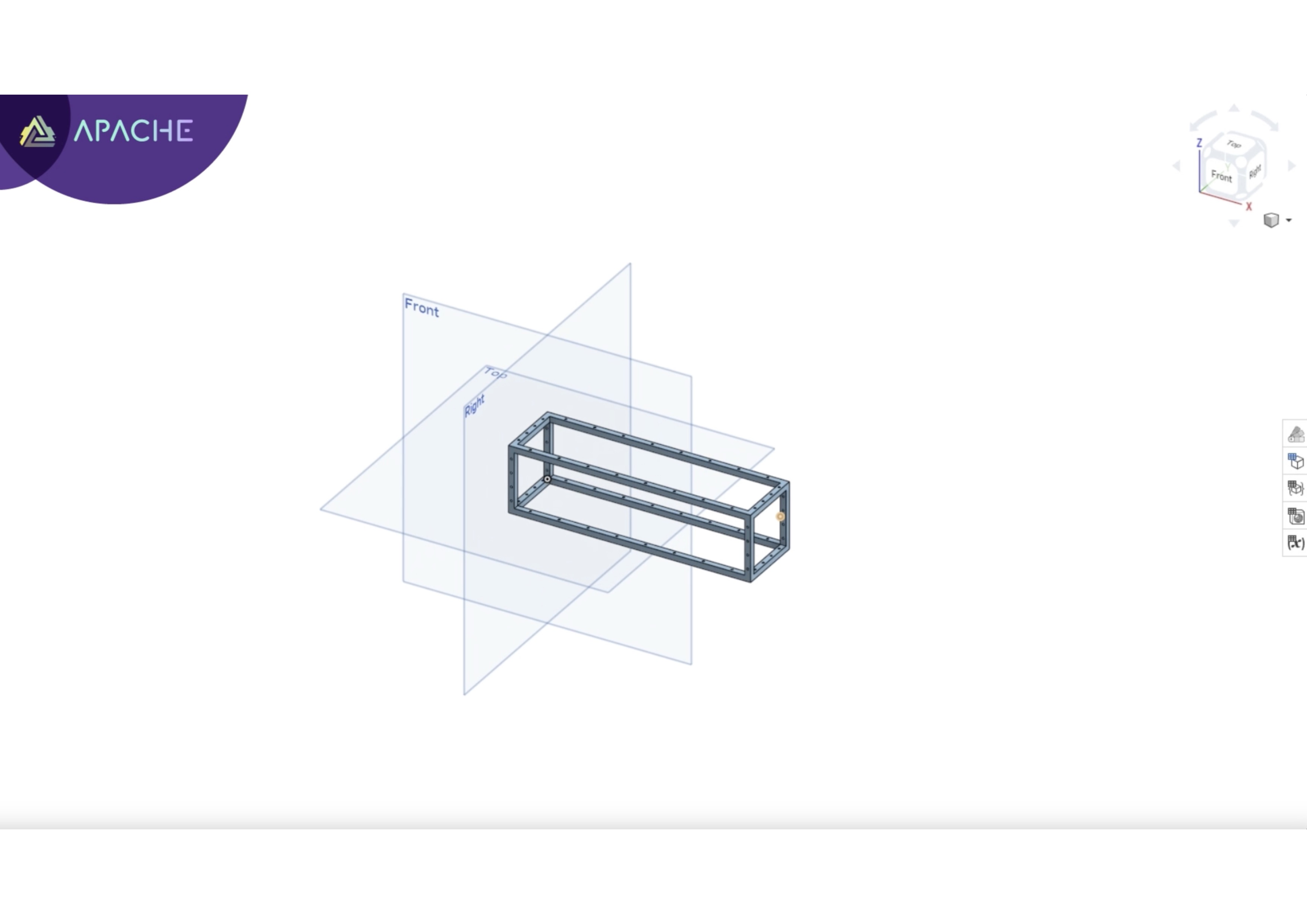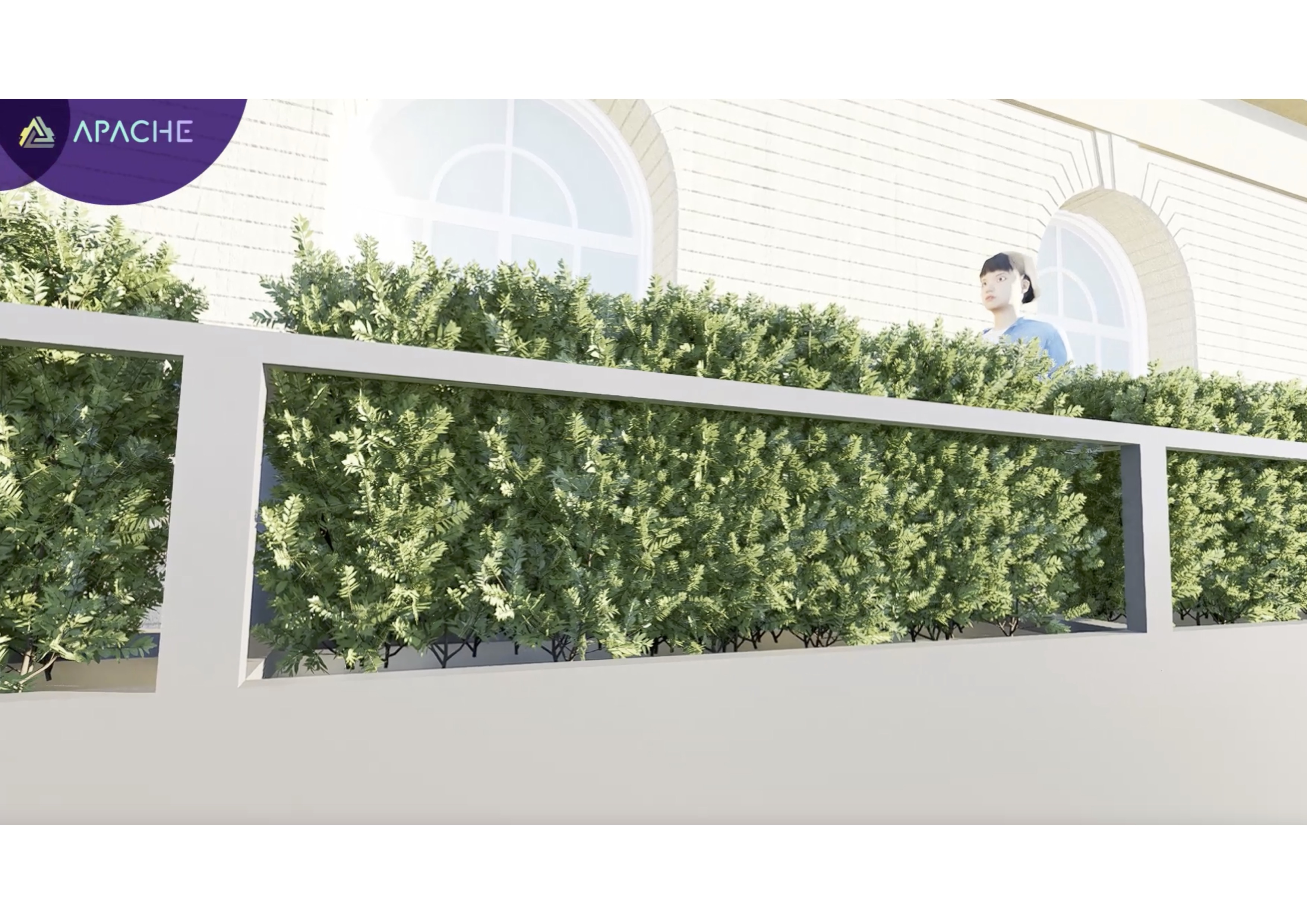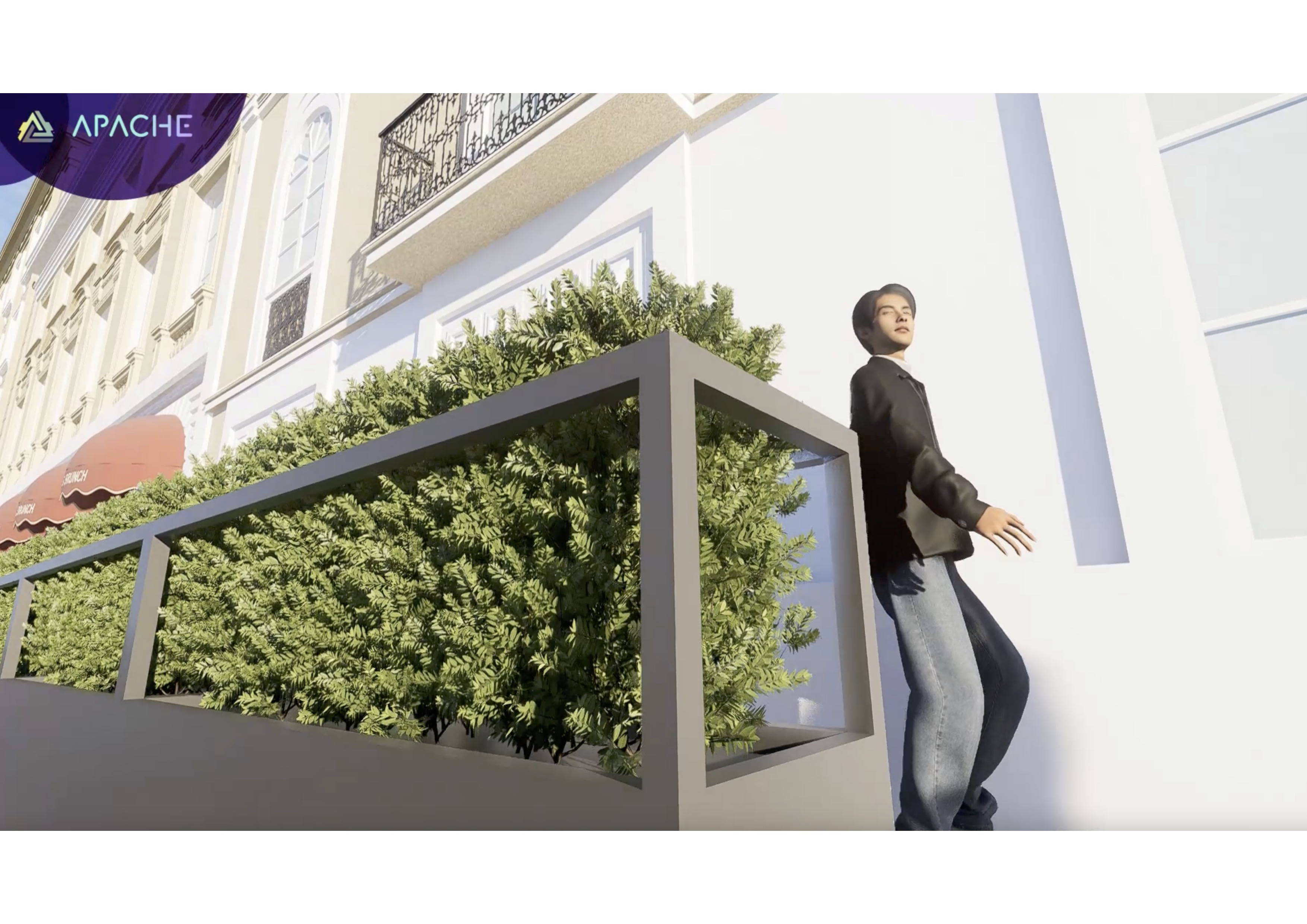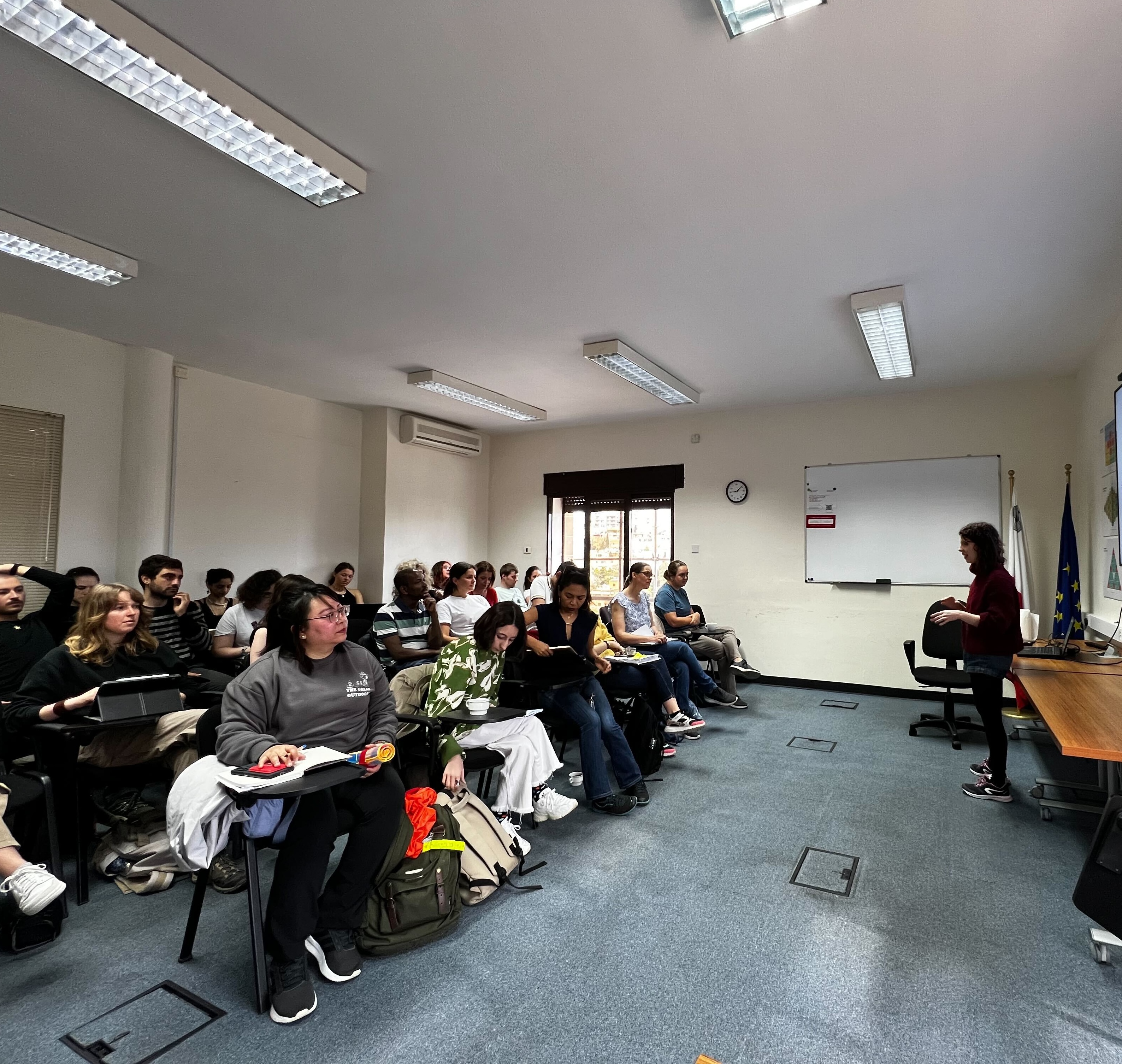Reconnecting with nature
Barriers for cleaner pedestrian air
Investigation of vegetation barriers to improve pedestrian air quality in dense urban environments
This project investigates the application of vegetative barriers at diverting polluted airflow emitted from vehicular traffic away from the pedestrian zones. Various numerical and experimental investigations were performed in order to narrow down designs that work for narrow streets typical of dense urban environments.
Malta
National
Mainly urban
It refers to other types of transformations (soft investment)
Early concept
No
No
As an individual
Pedestrians, are exposed to high concentrations of pollutants in traffic zones since pollutants are released in the region of about 50cm above ground. This is within the breathing zone of young children and pets. This exposure to harmful pollutants poses significant health risks, including respiratory issues and long-term health effects. This critical issue inspired the applicant to seek sustainable solutions that do not require active filtration or the use of fans or other energy-consuming equipment. The goal was to find a Nature Based Solution (NBS) to protect pedestrians from pollution. The focus of APACHE is to reduce concentrations of gaseous pollutants such as VOCs and particulate matter. Street furniture such as planters and greening elements provide aesthetic/architectural features to the urban environment. However, the applicant hypothesized that, in addition to this NEB value, careful design and placement of planters could also provide a barrier against pollution that is released from vehicles. The literature supports the positive effects of vegetation in modifying airflow and the transport of pollutants in urban areas, yet no studies or designs have been established to show how barriers can be designed to shield pedestrians effectively. APACHE utilizes state-of-the-art experimental and simulation tools to optimize the air quality barrier. The project leverages advanced Computational Fluid Dynamics (CFD) simulations and wind tunnel testing to validate the effectiveness of this innovative barrier design. The modular, vegetative barrier is shown to provide improvements in air quality in pedestrian areas by 55%. Supporting the project are citizens in an effort to promote inclusiveness. A number of workshops were organised so that citizen feedback informs design decisions in a co-design process. APACHE focuses on regions and cities affected by local pollution problems and being cheap and modular, can be included areas with socio-economic challenges.
Vegetative barrier
Air quality
Health and wellbeing
Co-design
Nature-based solution
THE APACHE project addresses four sustainability objectives: (i)The landscaping barrier should be passive and environmentally sustainable, (ii)The barrier should
integrate greenery in outdoor urban spaces whilst providing pollutant mitigation in pedestrian areas, (iii) To develop a barrier that requires minimal maintenance in
terms of watering, (iv) The solution should be scalable and modular to enhance sustainability, The APACHE vegetative barrier has been experimentally shown to reduce pedestrian exposure to harmful pollutants like VOCs by 55%. This is by means of a segmented vegetation barrier with appropriate foliage and dimensions that
aerodynamically controls the transport of pollutants from the road to the sidewalk without requiring any energy consumption. The optimal solution was found to be a fully vegetative barrier (no planter above road level). The experimental testing of the barrier takes into account wind flows in urban environments that are partly responsible for the transport of pollutants (along with diffusion). In terms of function the barrier only requires appropriate foliage shape to maintain key aerodynamic dimensions. In addition, the species used for vegetation can be chosen depending on location. For a mediterranean climate, the species Genista Hispanica was found to be suitable. This ensures minimal watering requirements given the limited annual
rainfall of such locations. Economic sustainability is achieved through modularity and scalibility as it does not require expensive materials. The project advances passive, sustainable solutions for urban air pollution, providing guidance for integrating nature-based designs in cities. APACHE's modular approach ensures it can be replicated across different urban settings, promoting sustainability in more challenging socio-economic areas. The project enhances urban ecosystems, supporting EU climate goals through controlling the adverse health effects of emissions and greener public spaces.
integrate greenery in outdoor urban spaces whilst providing pollutant mitigation in pedestrian areas, (iii) To develop a barrier that requires minimal maintenance in
terms of watering, (iv) The solution should be scalable and modular to enhance sustainability, The APACHE vegetative barrier has been experimentally shown to reduce pedestrian exposure to harmful pollutants like VOCs by 55%. This is by means of a segmented vegetation barrier with appropriate foliage and dimensions that
aerodynamically controls the transport of pollutants from the road to the sidewalk without requiring any energy consumption. The optimal solution was found to be a fully vegetative barrier (no planter above road level). The experimental testing of the barrier takes into account wind flows in urban environments that are partly responsible for the transport of pollutants (along with diffusion). In terms of function the barrier only requires appropriate foliage shape to maintain key aerodynamic dimensions. In addition, the species used for vegetation can be chosen depending on location. For a mediterranean climate, the species Genista Hispanica was found to be suitable. This ensures minimal watering requirements given the limited annual
rainfall of such locations. Economic sustainability is achieved through modularity and scalibility as it does not require expensive materials. The project advances passive, sustainable solutions for urban air pollution, providing guidance for integrating nature-based designs in cities. APACHE's modular approach ensures it can be replicated across different urban settings, promoting sustainability in more challenging socio-economic areas. The project enhances urban ecosystems, supporting EU climate goals through controlling the adverse health effects of emissions and greener public spaces.
The aesthetic and quality of experience objectives were the following: (i) To seamlessly integrate these barriers into the urban landscape, (ii) to achieve functional and cultural needs of the communities where it is implemented, (iii) to
foster a stronger connection between urban residents and nature through design, (iv) To provide improved health and wellbeing and a more enjoyable pedestrian experience by improving air quality, reducing noise, and a visually attractive, greener public space.
The design of the barrier is such that it can be used as an aesthetically pleasing landscaping element. To this end, and to ensure that a broad cultural representation, citizens and stakeholders were engaged through a series of workshops to gather input on the APACHE project from co-design (e.g., barrier height and visibility) to co-
evaluation. The co-design workshop showed that the citizen’s main requirement was improved health and wellbeing standards. In addition, secondary benefits such as aesthetic and functional appeal were sought. Since these landscaping elements are meant to be located in busy urban zones, using greenery as both a functional and
aesthetic component, creates both visual continuity between public spaces and natural elements. Citizens were updated on the design and laboratory testing of these elements thus providing them with hands on access to science. The final co-evaluation workshop showed that the proposed APACHE solution satisfied the
requirements of stakeholders which justifies full scale deployment in the future.
APACHE exemplifies how infrastructure can achieve both utility (pollution control) and aesthetic enhancement, serving as a model for sustainable urban design. The co-design process ensures that the project aligns with local cultural identity and aesthetic preferences, creating spaces that resonate with the community and foster a sense of belonging. The barrier’s modular design allows for adaptation to different cultural identities.
foster a stronger connection between urban residents and nature through design, (iv) To provide improved health and wellbeing and a more enjoyable pedestrian experience by improving air quality, reducing noise, and a visually attractive, greener public space.
The design of the barrier is such that it can be used as an aesthetically pleasing landscaping element. To this end, and to ensure that a broad cultural representation, citizens and stakeholders were engaged through a series of workshops to gather input on the APACHE project from co-design (e.g., barrier height and visibility) to co-
evaluation. The co-design workshop showed that the citizen’s main requirement was improved health and wellbeing standards. In addition, secondary benefits such as aesthetic and functional appeal were sought. Since these landscaping elements are meant to be located in busy urban zones, using greenery as both a functional and
aesthetic component, creates both visual continuity between public spaces and natural elements. Citizens were updated on the design and laboratory testing of these elements thus providing them with hands on access to science. The final co-evaluation workshop showed that the proposed APACHE solution satisfied the
requirements of stakeholders which justifies full scale deployment in the future.
APACHE exemplifies how infrastructure can achieve both utility (pollution control) and aesthetic enhancement, serving as a model for sustainable urban design. The co-design process ensures that the project aligns with local cultural identity and aesthetic preferences, creating spaces that resonate with the community and foster a sense of belonging. The barrier’s modular design allows for adaptation to different cultural identities.
In terms of inclusion the following objectives were set: (i) Reduction of pollution exposure to vulnerable groups such as children or wheelchair bound individuals (low breathing height), (ii) ensure that the design and science reflects the need and preferences of the community that it is meant to serve, (iii) ensure that the design provides accessability and usability by people of any ability or socio-economic background, (iv) APACHE aims ot be affordable and low maintenance.
The APACHE barrier has been shown (At TRL4) to provide better air quality in pedestrian zones at breathing heights of 1.8m (adults) and 1m height above ground (children and other minority groups). Consultation with citizens also ensures that this is done in an inclusive way. The segmented nature of the barrier ensures safety and facilitates pedestrian movement especially by vulnerable minorities such as the disabled. The modular design can be customized and easily installed in different city layouts, reducing resource use during deployment and maintenance. The exemplary characteristics of APACHE’s inclusivity policy directly considers the unequal impact of urban pollution on vulnerable populations, demonstrating how
infrastructure projects can promote social and environmental justice. APACHE exemplifies stakeholder engagement that empowers citizens to shape their urban environment. The barrier is designed to be accessible and functional for everyone, without creating physical or visual barriers in public
paces. APACHE’s design means that future deplopyment can be done within diverse communities, in view of its simplicity in design. Since APACHE is exclusively focused to reach TRL4, it provides a demonstration of how scientific development can proceed hand in hand with citizen specifications and provide a more equitable access towards science.
The APACHE barrier has been shown (At TRL4) to provide better air quality in pedestrian zones at breathing heights of 1.8m (adults) and 1m height above ground (children and other minority groups). Consultation with citizens also ensures that this is done in an inclusive way. The segmented nature of the barrier ensures safety and facilitates pedestrian movement especially by vulnerable minorities such as the disabled. The modular design can be customized and easily installed in different city layouts, reducing resource use during deployment and maintenance. The exemplary characteristics of APACHE’s inclusivity policy directly considers the unequal impact of urban pollution on vulnerable populations, demonstrating how
infrastructure projects can promote social and environmental justice. APACHE exemplifies stakeholder engagement that empowers citizens to shape their urban environment. The barrier is designed to be accessible and functional for everyone, without creating physical or visual barriers in public
paces. APACHE’s design means that future deplopyment can be done within diverse communities, in view of its simplicity in design. Since APACHE is exclusively focused to reach TRL4, it provides a demonstration of how scientific development can proceed hand in hand with citizen specifications and provide a more equitable access towards science.
Three workshops were organised in order to cater for an holistic co-design, co-implementation and co-evaluation. This ensure direct and tangible impact on the scientific processes that underpin the project. In the first workshop, feedback was gathered on particular design features such as barrier height, dimensions, and vegetation usage. This shaped the scientific methodology of both simulation and experimental testing. Citizens had an active role in shaping the final design through surveys and discussions.
Feedback on preliminary results was collected in the second workshop, particularly from young participants and residents, ensuring that the project addressed real-world needs and preferences. In the final workshop, the outcomes of the APACHE project were evaluated with stakeholders with a view for future deployment and development beyond Technology Readiness Level 4. The APACHE team also participated in local events like "Science in the City" and Café Scientifique and these provided opportunities to inform the broader community about the project, building awareness and generating interest. These events enabled direct interaction, allowing citizens to understand and contribute to the project goals. Throughout these efforts, feedback helped refine the barrier's design, ensuring that it balanced functionality and community preferences. Citizens gained awareness and ownership of the initiative, which fosters long-term acceptance and sustainability of the project outcomes.
Feedback on preliminary results was collected in the second workshop, particularly from young participants and residents, ensuring that the project addressed real-world needs and preferences. In the final workshop, the outcomes of the APACHE project were evaluated with stakeholders with a view for future deployment and development beyond Technology Readiness Level 4. The APACHE team also participated in local events like "Science in the City" and Café Scientifique and these provided opportunities to inform the broader community about the project, building awareness and generating interest. These events enabled direct interaction, allowing citizens to understand and contribute to the project goals. Throughout these efforts, feedback helped refine the barrier's design, ensuring that it balanced functionality and community preferences. Citizens gained awareness and ownership of the initiative, which fosters long-term acceptance and sustainability of the project outcomes.
The engagement of stakeholders affecting the design process was mostly focused with residents and community leaders who participated in workshops, providing essential feedback on the design and implementation phases. The municipality of Gzira, in Malta, was chosen as a case study to perform numerical simulations with the use of these barriers. The municipality was fuly engaged in this design process and supported our locally funded project APACHE. The choice of this city was based on two features: (i) mutli-cultural character and (ii) its urban character. Local events ensured the barrier would meet urban planning requirements and integrate particularly in local contexts. Results were also disseminated in a research expo, television programs and popular magazine articles to help increase visibility. On an international level, the project was presented at the 19th International Conference on Sustainable Development of Energy, Water and Environmental Systems (SDEWES) conference in Rome, fostering knowledge exchange and collaboration across borders. Other instances of dissemination at European level were through the principal investigator’s inviolvement in other European projects of a relevant nature including VARCITIES (https://varcities.eu) and JUSTNature (https://justnatureproject.eu). This further enabled engagement with larger initiatives that may stimulate future development. The impact of this multi-level engagement process added credibility, technical support, and wider dissemination, ensuring that the project benefitted from both local relevance and global expertise. One example which supports this claim is the modular design aspect of the APACHE barrier which can be easily be replicated in other cities with only a minor consideration of the vegetation species to be used to ensure minimal maintenance.
The project integrated aerodynamics, environmental engineering, urban planning, and citizen science. Specialists in Computational Fluid Dynamics (CFD) simulations, landscape architects, vegetation design, and air quality assessment collaborated to optimize the barrier's performance. The team involved engineers, scientists, citizen science experts and community representatives that ensured that both technical as well as the social challenges are addressed. Citizen feedback was crucial for balancing technical performance with aesthetic and practical usability. The integration of diverse knowledge fields led to a solution that was not only scientifically robust but also socially and aesthetically suitable for urban environments. This collaborative approach serves as an exemplary model for tackling complex urban challenges through multi-disciplinary innovation that is grounded in science and social realities.
Landscaping elements and planters are commonly found in the built environment and particularly in pedestrian areas. The scope of these urban design features is generally limited to aesthetic, visual and architectural. APACHE proposes a paradigm shift in this approach and proposes a landscaping element that fulfill these purposes but also provides a functional purpose – that of improving air-qaulity by diverting pollutants away from the pedestrian zone. Underpinning the whole project is public acceptance and stakeholder involvement as it seamlessly integrates into cityscapes while providing environmental benefits. An initial patent review found only one similar solution, SmogStop (Canadian Patent 305378), designed primarily for highways rather than dense urban areas. SmogStop barriers, reaching 3.5 meters, are unsuitable for pedestrian zones. APACHE, in
contrast, is specifically designed for urban settings, addressing their unique challenges and constraints. This differentiation underscores its innovative nature. APACHE innovates by providing a research-backed, empirically validated solution. Simulations and experimental testing in the lab confirm at least a 55% reduction in mean pollutant concentrations on sidewalks, demonstrating real-world effectiveness. Further innovation lies in APACHE’s optimized design parameters—such as foliage density, planter-to-vegetation height ratio, and overall dimensions—ensuring maximum pollution reduction while maintaining aesthetic harmony. Unlike traditional barriers, APACHE’s urban-focused design balances effectiveness with visual and
spatial integration. APACHE’s modular design adds further uniqueness. Unlike existing solutions, its adaptability allows for customization across different road segments and urban layouts. This modularity ensures easier installation, maintenance, and scalability, making APACHE a practical and versatile solution.
contrast, is specifically designed for urban settings, addressing their unique challenges and constraints. This differentiation underscores its innovative nature. APACHE innovates by providing a research-backed, empirically validated solution. Simulations and experimental testing in the lab confirm at least a 55% reduction in mean pollutant concentrations on sidewalks, demonstrating real-world effectiveness. Further innovation lies in APACHE’s optimized design parameters—such as foliage density, planter-to-vegetation height ratio, and overall dimensions—ensuring maximum pollution reduction while maintaining aesthetic harmony. Unlike traditional barriers, APACHE’s urban-focused design balances effectiveness with visual and
spatial integration. APACHE’s modular design adds further uniqueness. Unlike existing solutions, its adaptability allows for customization across different road segments and urban layouts. This modularity ensures easier installation, maintenance, and scalability, making APACHE a practical and versatile solution.
The APACHE air quality barrier project employs a comprehensive approach, integrating simulation, experimentation, and stakeholder engagement to develop an effective urban air quality solution. Two primary methods were used to test its effectiveness: Computational Fluid Dynamics (CFD) simulations and experimental model-scale testing. CFD simulations analyzed air and pollutant flow around the barrier, providing crucial insights into its performance in complex urban environments. To validate these simulations, wind tunnel experiments were conducted at the University of Malta, using Particle Image Velocimetry (PIV)—a high-power laser and imaging system that enables direct flow measurement. These experiments provided empirical data to confirm the barrier’s effectiveness, ensuring reliable and accurate results. The conceptual and aesthetic aspects of the barrier were developed through a co-creative and citizen science process. Stakeholder workshops refined key design features, ensuring that the barrier met both functional and urban planning needs. For instance, public feedback favored maintaining visual access to the road, leading to a height restriction of 1.7 meters. By incorporating diverse perspectives, the project fostered a sense of ownership and increased acceptance among stakeholders. APACHE offers potential noise reduction benefits, enhancing its multifunctionality in urban environments. By combining technological innovation with community participation, APACHE demonstrates a scalable approach to urban planning and environmental management. Its methodology serves as a model for developing holistic, inclusive, and technically sound solutions to urban air pollution and public health challenges. A brief article about the scientific work performed in the project can be found in the following link:
https://tinyurl.com/3nx3b6v4
A full video of the APACHE project can be viewed from the following link:
https://tinyurl.com/2ewrdk6d
https://tinyurl.com/3nx3b6v4
A full video of the APACHE project can be viewed from the following link:
https://tinyurl.com/2ewrdk6d
The APACHE project presents a highly replicable and transferable solution for urban air quality management, integrating a modular design, nature-based solutions, and stakeholder-driven development. The attached Technology Development Plan outlines the transition from the current TRL4 to prototype testing (TRL 5) and full-scale barrier deployment (TRL 9), ensuring the technology's robustness across different environmental conditions. By collaborating with local councils and urban planners, the project identifies suitable test locations, allowing for real-world validation and refinement. One of the most transferable aspects of APACHE is its nature-based pollution control strategy, which offers an alternative to high-walled barriers and energy-intensive filtration systems. The use of optimized vegetation as an air quality buffer makes the system both sustainable and cost-effective, with minimal maintenance requirements. The project’s stakeholder engagement process—including co-design workshops with residents and policymakers—ensures that the solution aligns with local needs and urban aesthetics, making it adaptable for implementation in cities with varying architectural, social and environmental constraints. The project’s emphasis on regulatory compliance, economic analysis, and public engagement campaigns further supports its transferability by ensuring alignment with local policies and urban planning frameworks. Beyond its primary function of pollution mitigation, APACHE’s technology holds potential for additional applications, including noise reduction and urban cooling, further increasing its relevance in diverse urban scenarios. The project’s development plan includes market expansion strategies and strategic partnerships with environmental agencies, urban developers, and policymakers, ensuring that the model can be replicated across multiple cities and adapted to various public spaces such as schools, parks, and high-traffic pedestrian zones.
The APACHE project targets global challenges related to health and well being, particularly in relation to pollution issues in urban settings. It is by now a well established fact that air pollution is responsible for various respiratory diseases, amongst other health issues. The APACHE project addresses this global challenge directly. In addition to this, the landscaping element is meant to be passive (no mechanical or energy requirements) as well as requires very minimal watering since the vegetation species is meant to be chosen in accordance to the local climatic classification.
The solution addresses both social and health inequalities as it is meant to be implemented in public spaces, frequented by all city inhabitants. The design of the barrier is in itself and exemplary form of co-creation of nature based solutions meaning that throughout the design phase, a continuous form of engagement has to take place despite the fact that the APACHE concept is still at experimental stage.
The transferrable nature of the technology means that, even at full scale implementation, the same principles of co-creation can be adopted including the choice of species, their location and so on. APACHE also aligns with global sustainability goals, particularly the United Nations Sustainable Development Goals (SDGs), including SDG 3 (Good Health and Well- being), SDG 11 (Sustainable Cities and Communities), and SDG 13 (Climate Action). It exemplifies how scientific research, technological innovation, and civic engagement can create localized solutions with broad global relevance. APACHE provides a real-world example of how local interventions can address global crises related to air pollution, climate change, and public health inequities. Through its evidence-based and participatory approach, it sets a precedent for cities worldwide, demonstrating that sustainable urban transformation can start from the lab.
The solution addresses both social and health inequalities as it is meant to be implemented in public spaces, frequented by all city inhabitants. The design of the barrier is in itself and exemplary form of co-creation of nature based solutions meaning that throughout the design phase, a continuous form of engagement has to take place despite the fact that the APACHE concept is still at experimental stage.
The transferrable nature of the technology means that, even at full scale implementation, the same principles of co-creation can be adopted including the choice of species, their location and so on. APACHE also aligns with global sustainability goals, particularly the United Nations Sustainable Development Goals (SDGs), including SDG 3 (Good Health and Well- being), SDG 11 (Sustainable Cities and Communities), and SDG 13 (Climate Action). It exemplifies how scientific research, technological innovation, and civic engagement can create localized solutions with broad global relevance. APACHE provides a real-world example of how local interventions can address global crises related to air pollution, climate change, and public health inequities. Through its evidence-based and participatory approach, it sets a precedent for cities worldwide, demonstrating that sustainable urban transformation can start from the lab.
The APACHE project roadmap has been layed out in our development plan. It focuses on the development, promotion and implementation. The immediate goal is to start development beyond TRL4 that will eventually require testing of a full scale prototype in selected urban areas. These tests will assess the field performance. The co-creation process will prevail throughout future development processes. For example, inevitably for urban testing, engagement with other municipalities will have to be done and continuous feedback received. Citizen engagement will take a new form, given the fact that prototypes will now be present in the urban context. This feedback loop will form part of a greater co-creation process that will happen throughout the development cycle as we move towards TRL9.
A detailed cost benefit analysis will assess the financial feasibility for municipalities which will help in further exploiting the results from APACHE. Funding is required and hence EU funds will be sought to be able to develop further the TRL level of APACHE. Intellectual property protection will be handled with caution and consultation with patent professionals will be made. A full development plan is provided in document3 in the attachment. A development timeline is also shown in Figure 3 of this document that details the work that will be done for the upcoming year and a further 2 years for a longer term projection.
A detailed cost benefit analysis will assess the financial feasibility for municipalities which will help in further exploiting the results from APACHE. Funding is required and hence EU funds will be sought to be able to develop further the TRL level of APACHE. Intellectual property protection will be handled with caution and consultation with patent professionals will be made. A full development plan is provided in document3 in the attachment. A development timeline is also shown in Figure 3 of this document that details the work that will be done for the upcoming year and a further 2 years for a longer term projection.

